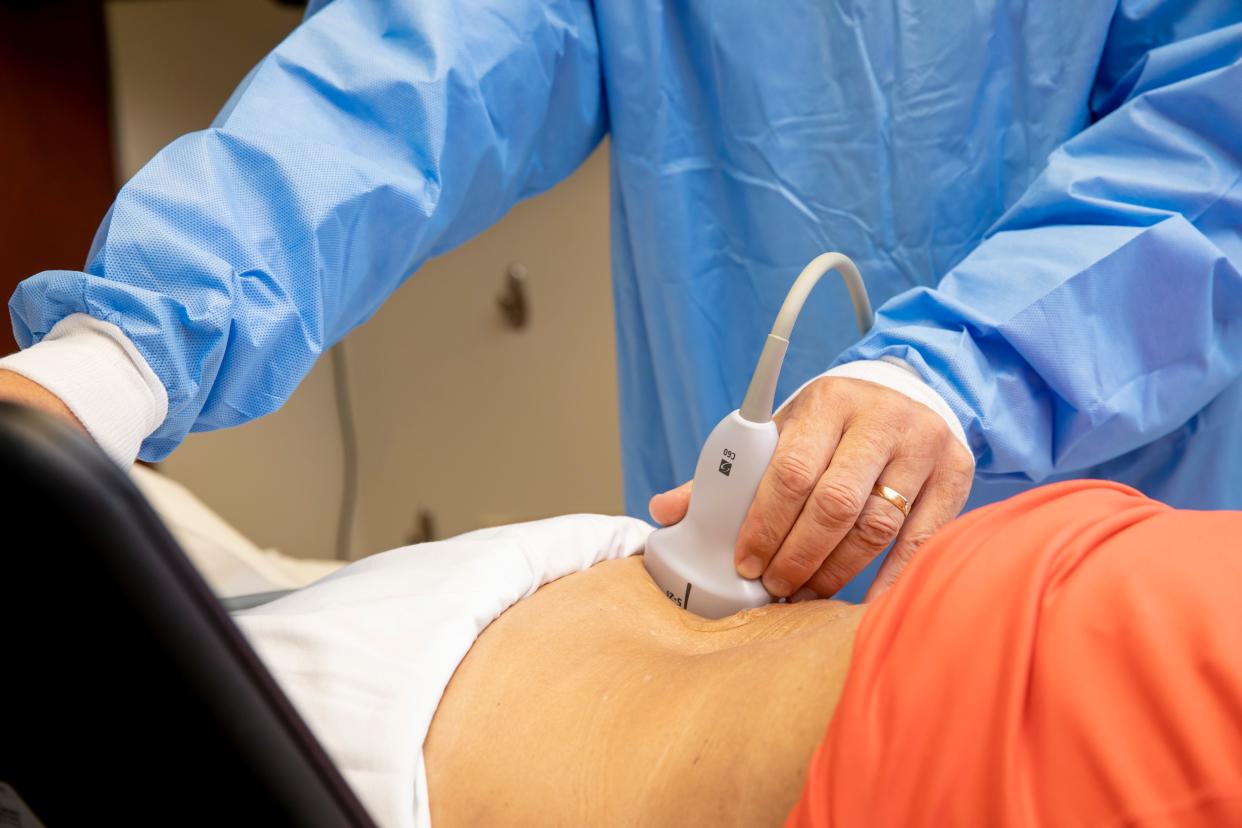Learn what options back pain sufferers have that are short of surgery

About 39% of U.S. adults — or around 100 million people — suffer from back pain.
For them, the pain can be constant and crippling.
Medical experts say movement, back exercises, over-the-counter medications and time eventually mediate or even eliminate the pain for the majority of sufferers. For about 16 million adults, however, the pain remains chronic.
For many, surgery may end up as the only option to remedy spinal problems such as a herniated or compressed disc, but for those hoping to avoid it, other treatments exist, say experts.
"It's an incredibly common problem, and it's very important to work with a primary care provider to know when these next steps may be necessary," said Dr. DanaMarie Aminian, a specialist in pain management at Mount Carmel St. Ann’s Hospital in Westerville.

Aminian and Dr. Caitlin Stuber, a pain management specialist at OhioHealth Physician Group, offered the following advice to patients suffering from back pain who aren't ready for surgery.
Column:Back pain leaves him feeling possessed
When is it time to pursue options beyond exercise?
The first steps to treat back pain are typically back exercises, movement and over-the-counter medications. If those fail to bring relief after eight to 12 weeks, it may be time to seek further medical help.
What are the first steps in determining treatment?
Doctors will seek to diagnose the source and nature of the pain through a patient's description, physical exam and imaging — an X-ray and often an MRI — before taking the next step in treatment.

"We'd want to hear their symptoms, and see what treatments they’ve had, and make sure we have up-to-date imaging, generally of the spine," Stuber said. "From there, it depends on what the cause of the pain is, which steps we go to next."
Options depend on diagnosis
Diagnoses often fall into two camps: pain centered in the back that stays in the back and pain that radiates from the back, typically through the buttocks and into the leg. Injections are common treatments for each diagnosis, but the injections work very differently depending on the diagnosis:
Epidural steroid injection. For pain that radiates beyond the back, doctors can inject a temporary pain killer and an anti-inflammatory steroid into the epidural space of the spine, in the hopes of calming the inflammation causing the nerve pain.
"Epidural steroids are really reserved for patients who are dealing with two issues: a pinched nerve, called radiculopathy, that we can confirm with imaging, or a second issue called spinal stenosis, the narrowing along the spine space," Aminian said.

The procedure is considered low risk and relatively painless, though not a cure-all.
"It calms down the inflammation; it's a bit like restarting your computer," Stuber said. "The goal is to get at least 50% pain relief for three months. It helps the vast majority of patients, but it varies how much relief they get."
More on back pain:For many, working from home during COVID has been a real pain — in the back
Radiofrequency ablation. This procedure, used for more targeted back pain, relies on heat to deaden specific nerves causing pain. Before the procedure, a doctor will do a trial run, in effect, to make sure the correct nerve or nerves are identified. Although it also requires injections, ablation is considered to have even fewer risks than epidural injections and can have longer-lasting benefits.
"Ablation doesn’t affect the nerves going to the legs," Stuber noted. "The primary purpose is to control pain from the facet joint. It can last up to two years."
An electrical approach
Neuromodulation, called spinal cord stimulation when used on the back, is a growing treatment for chronic back pain. Nerves causing the pain are electrically stimulated to change their pain signals. The procedure can be done, on a trial basis, in the doctor's office, but more commonly involves temporarily or permanently implanting a battery in the back to fuel the stimulation.
"It's a very exciting treatment," Stuber said. "This is used in patients who don’t respond to either of the injection procedures, who have already had surgery or don’t want surgery, but still have pain."
Health care:Engineering, medicine merge to solve back pain at Ohio State institute
Aminian noted that the procedure has been used for years but has gotten much more sophisticated.
"These have been around for a long time, but the devices have improved dramatically," she said. "But it has to be the right patient. This isn’t for everybody."
What other alternatives exist?
While they aren't specialists in these areas, Aminian and Stuber say some patients receive relief from less conventional treatments such as acupuncture, psychotherapy and chiropractic care.
"I have many patients who benefit from a multimodal approach which can include acupuncture and chiropractic therapy," Stuber said.

When might it be necessary to consider surgery?
Doctors look for certain signs when spinal nerves are damaged enough to warrant surgery.
"In general, it’s because of neurologic deficit, the loss of balance, weakness, or a true loss of sensation," Stuber said. "An emergency would be loss of control of bowel or bladder, foot dropping or inability to walk. Those are more urgent needs."
Those falling short of those surgical red flags may need to try different approaches and be patient, caution experts.
"In general, make sure you’re being open and honest with your primary care provider about what your symptoms are and what treatments you’ve tried," Aminian said. "Maybe you’ve tried exercise, over-the-counter medications, and it’s already been months. We want to make sure you get better, to relieve pain, of course, but also restore functionality and quality of life."
jweiker@dispatch.com
@JimWeiker
This article originally appeared on The Columbus Dispatch: Back pain treatments without surgery

